Refund Guaranteed
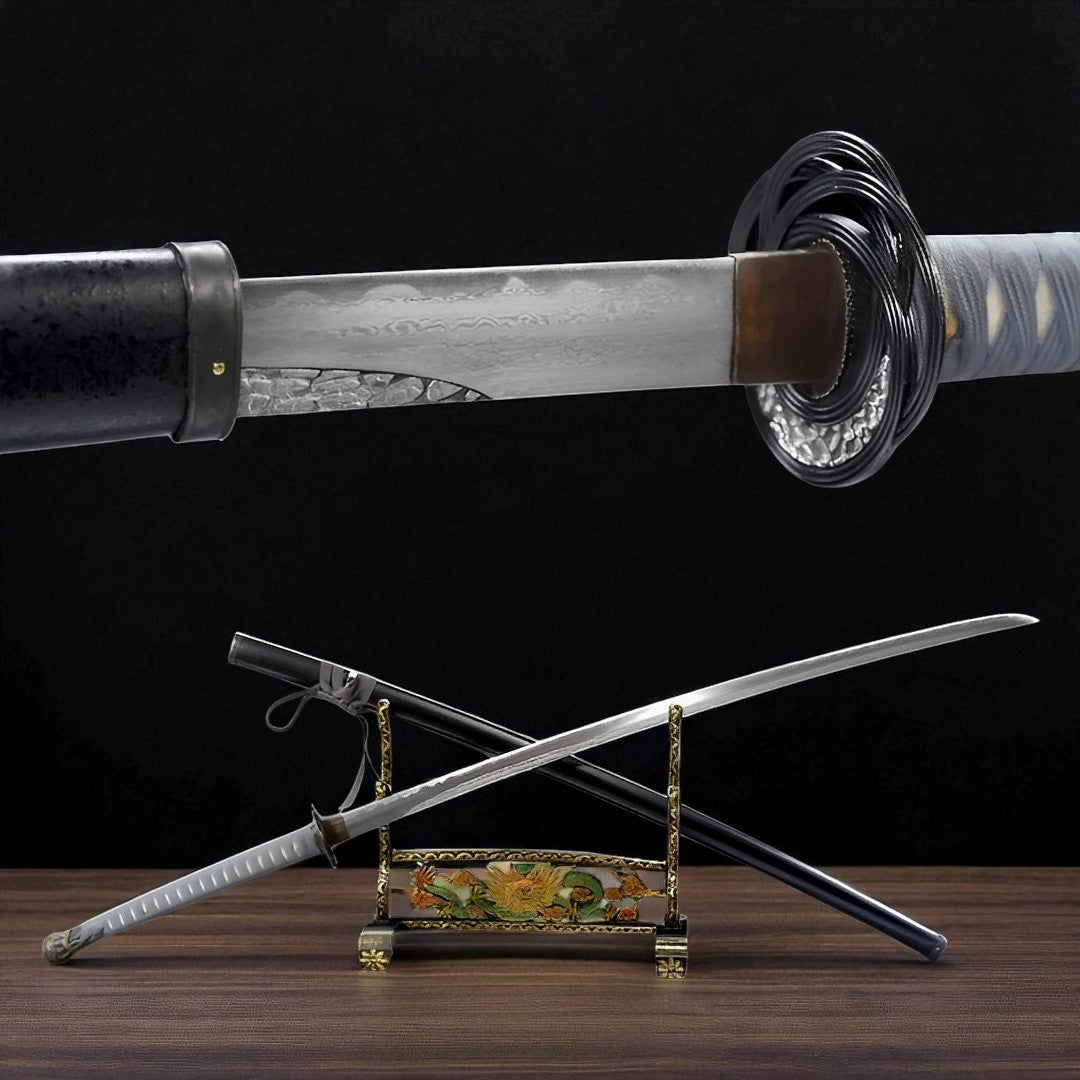
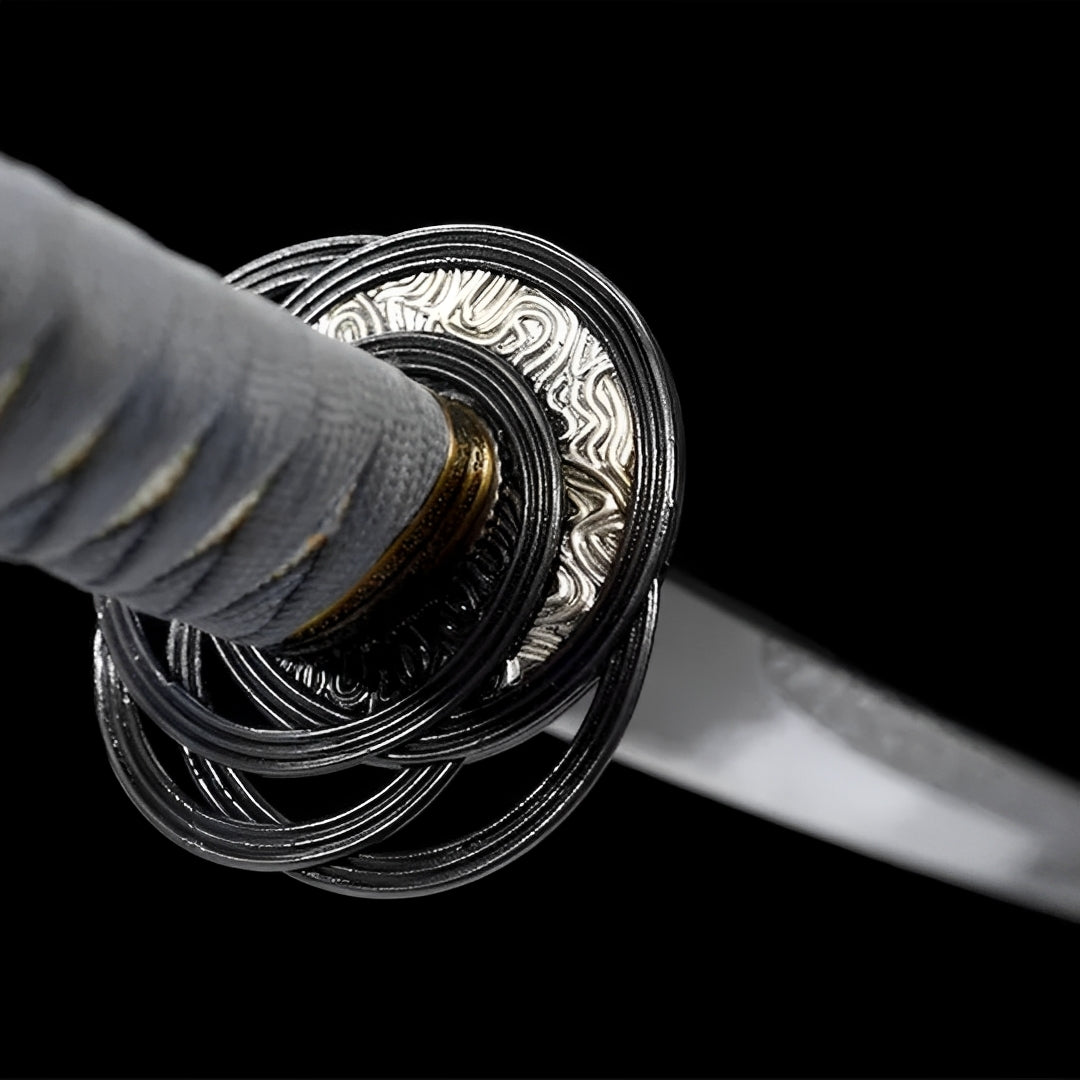
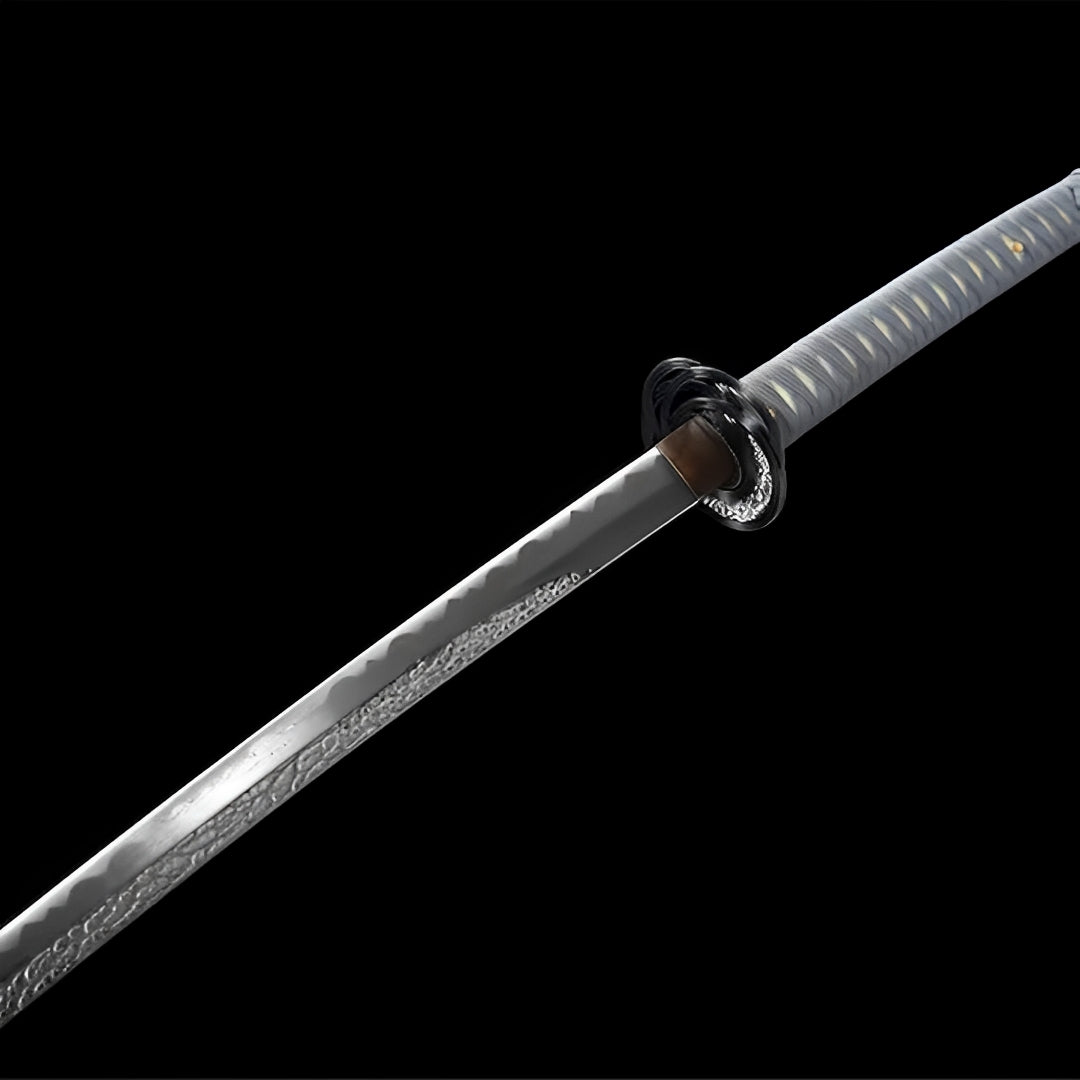
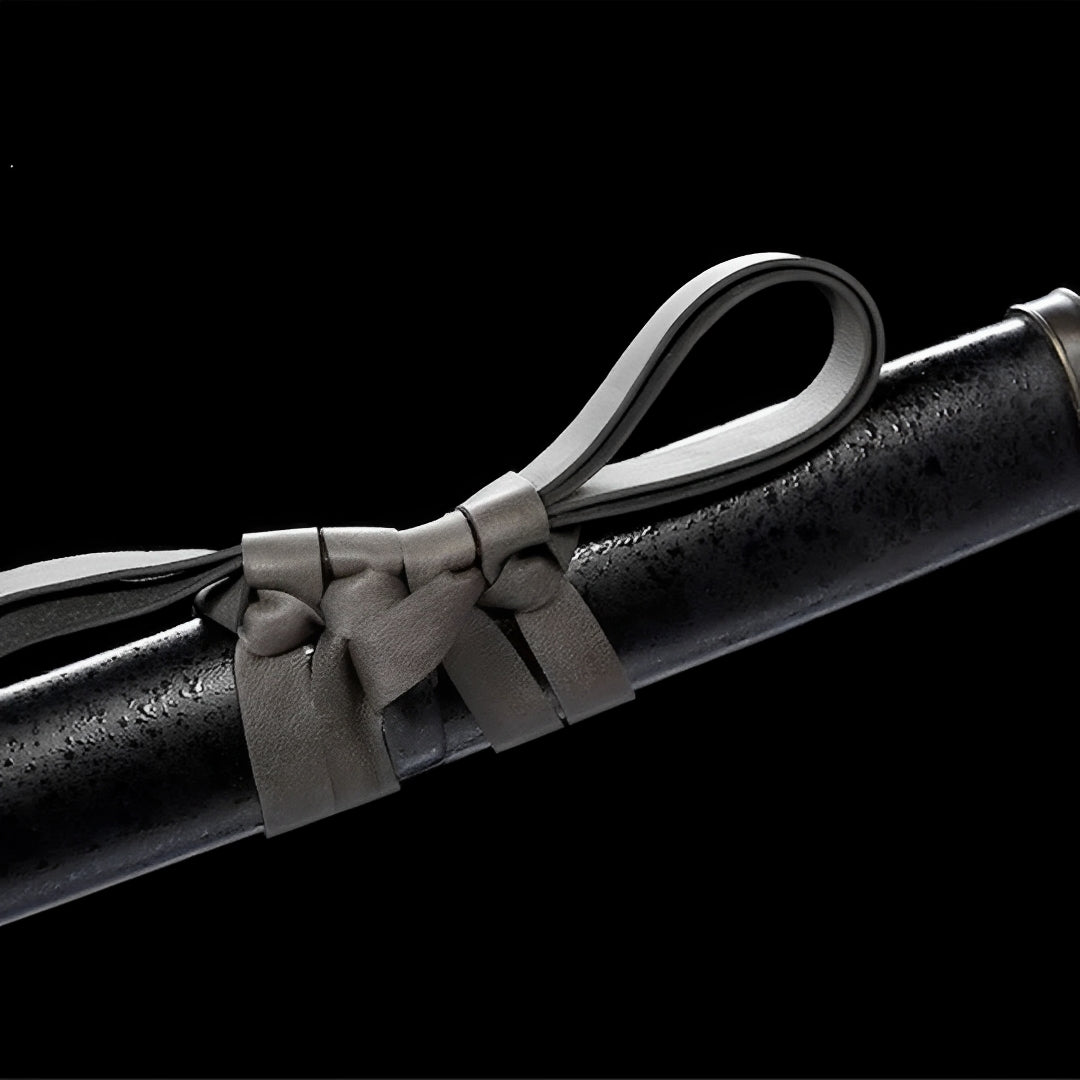

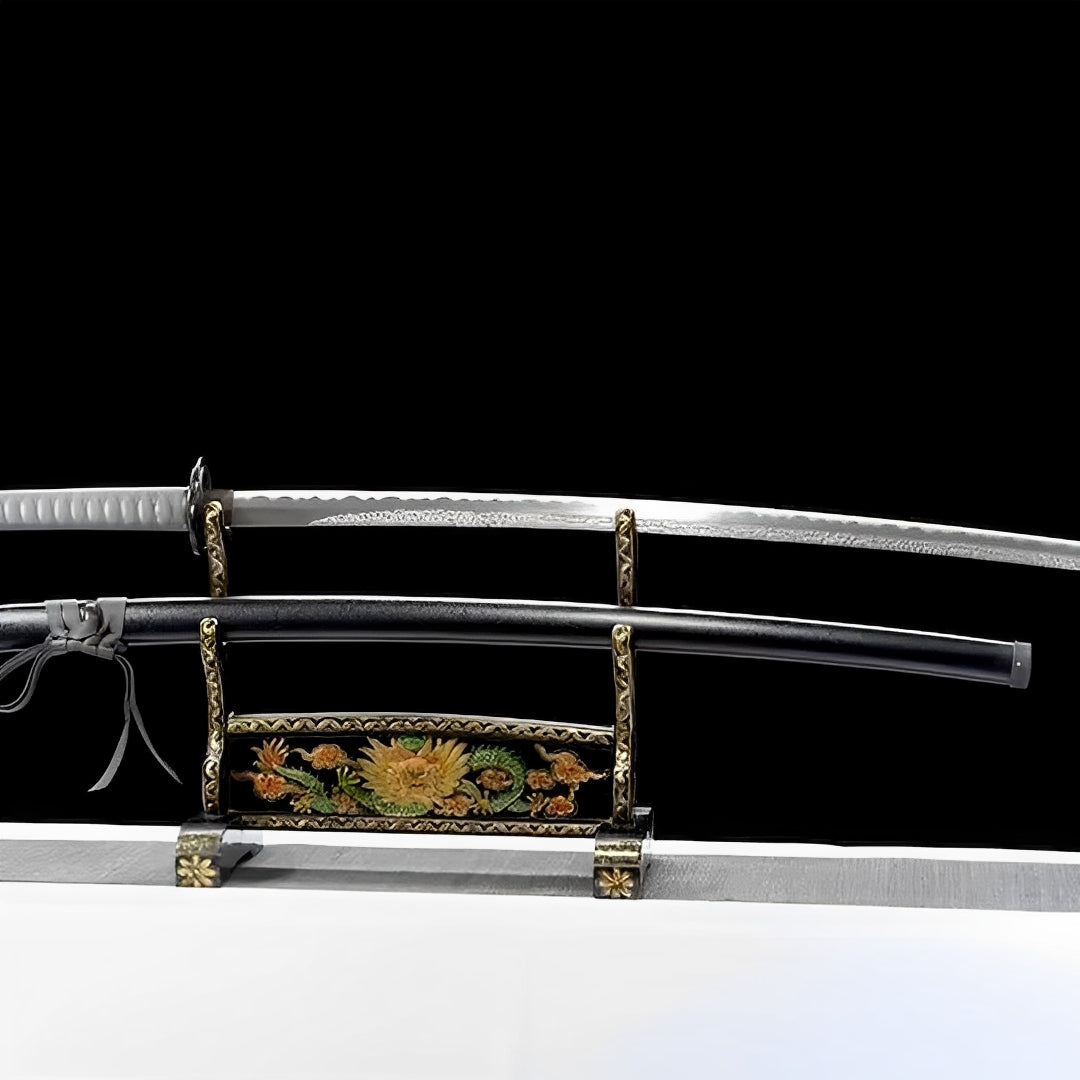
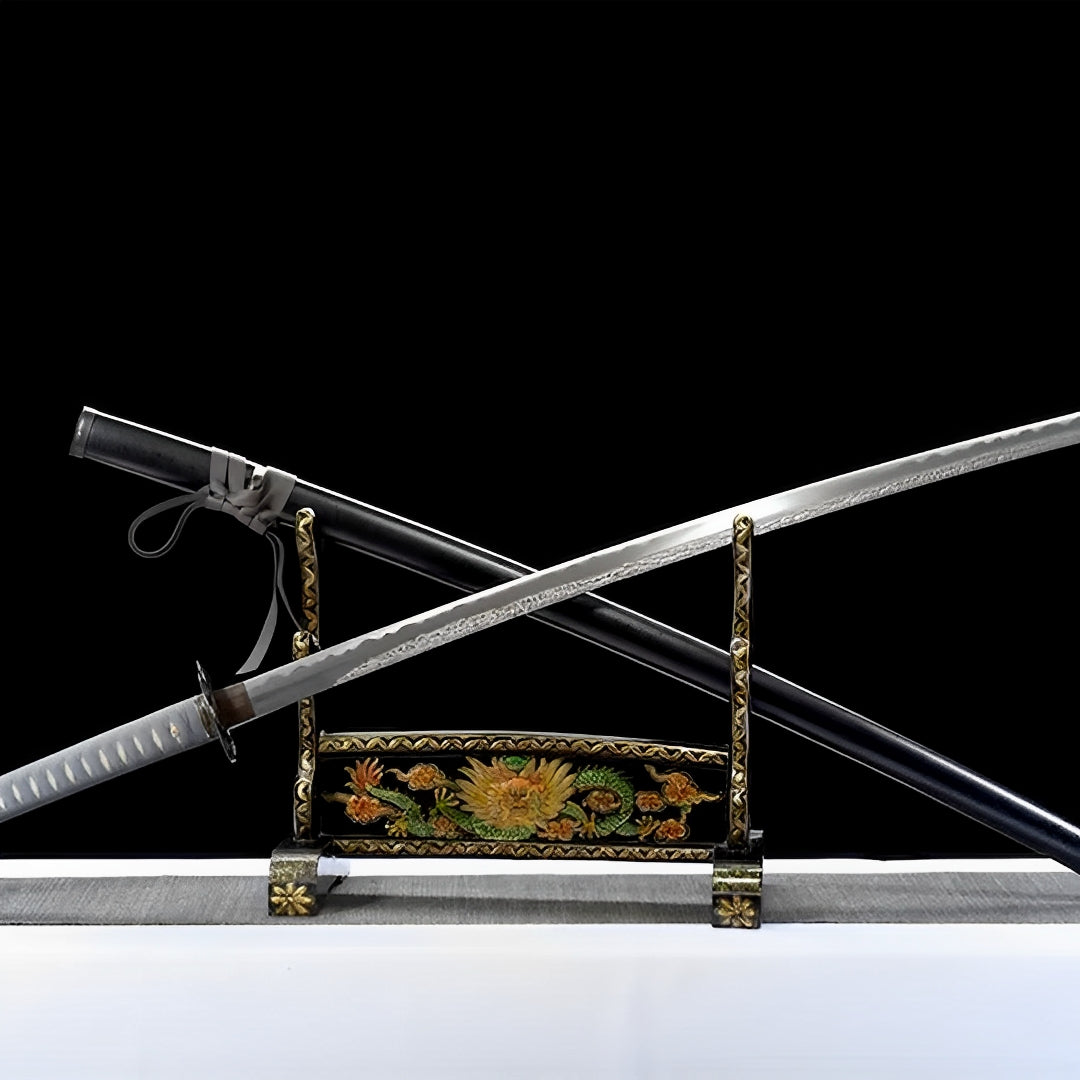
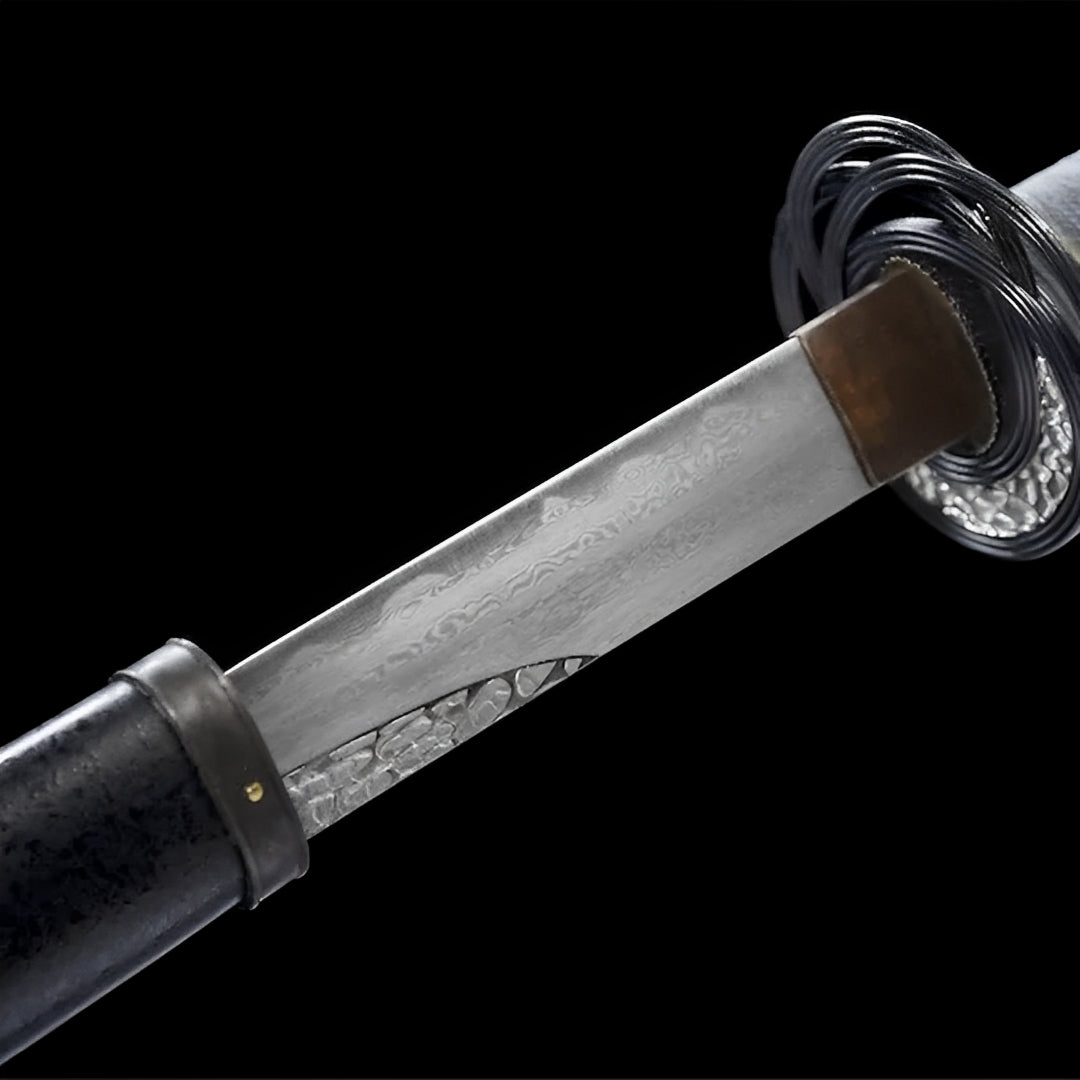
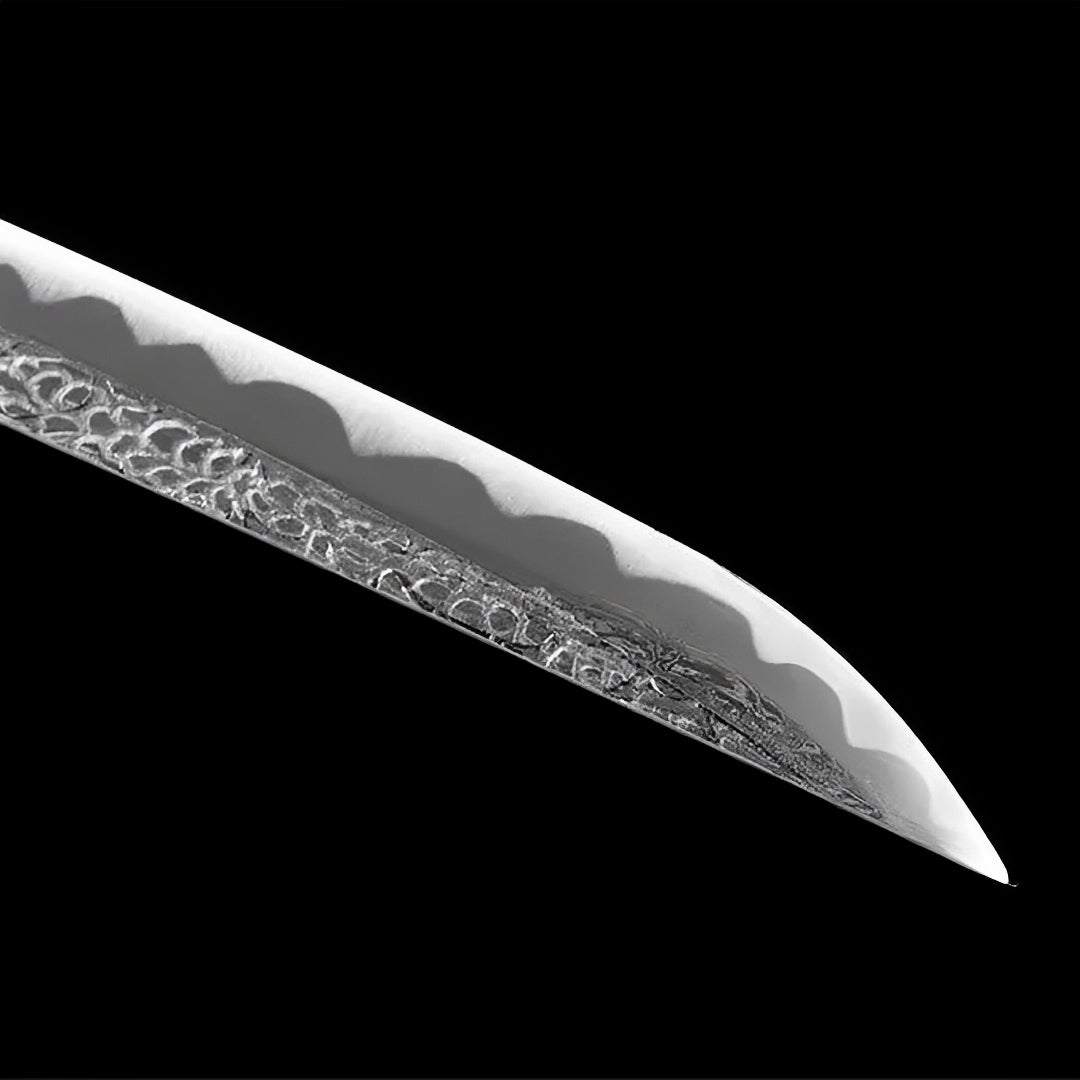
Why choose us
Ships within 48/72h
Forged Blade
Collector Quality
Trusted Globally
Inspired by Japan
Elden Ring Katana (Damascus Steel & Hamon) - 静刀
Popular upgrades
Free Shipping over $250
No Bots, No AI
Refund Guaranteed
Free Shipping over $250
No Bots, No AI
Our team is here to help with any questions or concerns.
We’re always happy to assist you — don’t hesitate to reach out.
Why choose us
Ships within 48/72h
Forged Blade
Collector Quality
Trusted Globally
Inspired by Japan

Elden Ring Katana (Damascus Steel & Hamon) - 静刀
Specifications
- Full tang in the handle
- SHARP blade
- Hand-forged
- Blade material: Damascus steel with genuine Hamon
- Habaki material: Copper
- Tsuba made of copper and silver
- Lacquered solid wood saya
- Solid wood tsuka wrapped in ray skin
- Tsuka-ITO made of cotton
- Total length: 105 cm
- Blade length: 72 cm
- Blade width: 3.2 cm
- Blade thickness: 0.7 cm
- Handle length: 30 cm
-
Included: Katana and its scabbard
Elden Ring Katana - Tarnished Damascus Lands Between Legacy
Rise from death with Elden Ring Katana, blade for Tarnished refusing stay buried. This resilient Lands Between weapon transcends FromSoftware's previous works - damascus patterns flowing like grace-guided rivers through shattered realm, visible hamon marking divide between life and death you'll cross repeatedly, the entire piece embodying Elden Ring's thesis that destiny belongs not to gods or demigods but to stubborn undying warrior willing learning from every failure until mastery emerges through ten thousand deaths, asking whether you'll accept fate maidenless or claim throne through persistence that would make even Radahn respect your foolish determination.
Damascus Pattern Rivers of Grace
The visible damascus steel patterning creates this blade's most distinctive technical feature - layered steel creating organic flow patterns resembling rivers of grace (the golden guidance system showing Tarnished which direction advancing story), the metallurgical technique producing not just beautiful surface but functional benefits: the multiple steel layers create edge combining different hardness levels, some layers providing flexibility preventing catastrophic fracture while others deliver hardness enabling edge retention, that combination achieving performance single-steel blade cannot match. This layered mastery blade channels centuries-old Damascus technique (pattern welding) into weapon honoring both historical craftsmanship and FromSoftware's latest masterpiece.
Traditional Damascus steel originated in Middle East, the technique spreading globally as metallurgists recognized advantages despite complexity - forge-welding different steels together, folding repeatedly creating hundreds of layers, the acid-etching revealing patterns after polishing. Japanese swordsmiths developed parallel technique (mokume-gane) achieving similar effects, proving optimal solutions emerge independently across cultures when craftsmen pursue perfection obsessively. The cross-cultural technique sword demonstrates that greatness transcends geography, that Japanese blade geometry can benefit from Middle Eastern metallurgy, that Elden Ring's fusion of Western fantasy with Eastern game design philosophy mirrors this metallurgical East-West synthesis.
The specific pattern style - flowing organic curves rather than geometric regularity - suggests water or wind shaping landscape across millennia, appropriate metaphor for Lands Between geography shaped by catastrophic events, divine wars, the Shattering itself fragmenting reality. The geological time blade patterns therefore don't merely beautify but communicate narrative: this weapon exists in world where gods warred, where land itself bears scars from conflicts transcending mortal comprehension, where every rock and river tells story of violence so profound it reshaped continents.
Modern Damascus replication achieves pattern through either authentic forge-welding (labor-intensive, expensive, creating genuine performance benefits) or surface etching (cheaper, purely aesthetic, no functional advantage). Quality Elden Ring replicas should feature genuine pattern-welded construction honoring game's own respect for craft - Elden Ring doesn't take shortcuts in world-building, weapon design shouldn't take shortcuts in construction.
Gaming collectors specifically appreciate when replica quality matches source material's artistic excellence - Elden Ring won countless Game of the Year awards partly through respecting players' intelligence and refusing compromising vision for mass appeal, sword honoring that philosophy through refusing compromising craft quality for cost savings.
Lands Between Shattered Beauty
Elden Ring's world building creates FromSoftware's most ambitious achievement - vast open world replacing linear corridors, George R.R. Martin collaborating on mythology creating depth rivaling his Song of Ice and Fire work, the Lands Between featuring geography so detailed that every ruin tells story, every enemy placement suggests tactical history, every vista rewards exploration with breathtaking beauty often preceding brutal death. This shattered world blade exists in universe where beauty and horror intertwine inseparably, where magnificent golden tree Erdtree dominates horizon while beneath it Tarnished warriors die repeatedly seeking audience with demigods who'd sooner murder you than acknowledge your existence.
The katana specifically within Elden Ring represents player choice - unlike Sekiro forcing single weapon or Dark Souls limiting build variety through weapon upgrade paths, Elden Ring offers dozens of katanas each with unique skills, stats, aesthetic, the weapon becoming expression of player identity rather than game imposing single correct approach. That build variety respects player agency in ways previous FromSoftware games suggested but Elden Ring perfects, the open-world structure enabling finding powerful weapons early if you're brave/foolish enough exploring dangerous areas before "supposed" to.
The specific dark aesthetic with silver patterns mirrors Lands Between's characteristic visual language - ruins of golden age civilization now tarnished (literally - Tarnished are you), grace's golden guidance occasionally visible yet most world exists in twilight decay, beauty persisting despite corruption, hope remaining despite overwhelming evidence suggesting futility. The persisting hope weapon therefore doesn't present cheerful optimism but stubborn refusal accepting defeat, the aesthetic announcing "yes, world is broken, yes, gods abandoned us, yes, we'll probably die, but we're trying anyway because what else is there?"
Traditional FromSoftware aesthetic emphasized Gothic darkness (Dark Souls), cosmic horror (Bloodborne), feudal Japan precision (Sekiro), but Elden Ring creates something new: mythological fantasy where divinity failed, where gods proved as flawed as mortals, where broken world's beauty haunts precisely because glimpsing what was lost. The blade channels that specific melancholy grandeur impossible in previous games' more focused settings.
Maidenless Meme Immortality
Elden Ring achieved rare gaming feat: transcending gaming culture into mainstream meme consciousness. "Maidenless" became insult beyond gaming, Melina's "put these foolish ambitions to rest" became inspirational quote, Radahn festival became community celebration, Let Me Solo Her became folk hero, the cultural penetration ensuring Elden Ring remembered not just as great game but cultural phenomenon defining early 2020s gaming landscape.
The meme culture blade therefore carries weight beyond typical gaming weapon - it represents game that mattered culturally, that created shared vocabulary, that generated stories people tell non-gamers, that produced screenshots so visually stunning they worked as standalone art. Owning Elden Ring katana means participating in that cultural moment, claiming membership in community that shared experience of dying to Margit fifty times, finally beating Malenia after week-long attempts, exploring every dungeon despite knowing only ruin and despair await, the shared suffering creating bonds transcending typical online gaming interactions.
Varre calling Tarnished "maidenless" specifically became meme because it captured FromSoftware's signature cruel humor - you've barely started game, already died multiple times, now this dismissive NPC insults you personally, the moment establishing tone: this game will destroy you repeatedly and mock you while doing it, but if you persist you'll eventually look back at that moment laughing because you grew from hopeless maiden-less wretch into Elden Lord who killed literal gods.
Traditional gaming weapons rarely achieve meme status - they exist within their games, occasionally referenced in gaming communities, but don't breach containment into broader culture. Elden Ring katanas specifically became shorthand for "I play Elden Ring," the weapon identifying tribe membership, the blade becoming social signal as much as display piece.
Tarnished Persistence Philosophy
Elden Ring's narrative centers on Tarnished - exiles stripped of Erdtree's grace, denied even death's release, forced wandering until reclaiming grace through deeds proving worthiness. That's player: nobody initially, repeatedly killed by basic enemies, slowly growing stronger through learning attack patterns, eventually facing demigods as equal rather than victim, the arc from pathetic to powerful driven purely by player refusing quit despite game providing countless reasons for giving up.
This growth through suffering blade embodies specific philosophy distinguishing Elden Ring from other difficult games - it's not arbitrarily punishing sadism but carefully calibrated challenge teaching mastery through repetition, every death containing lesson about timing or positioning or resource management, the difficulty serving pedagogical purpose rather than mere gatekeeping. That educational approach explains why Elden Ring sold 20+ million copies despite reputation for difficulty - players recognize difference between unfair difficulty causing frustration versus fair difficulty enabling achievement's satisfaction.
The damascus patterns specifically create metaphor for player growth - the layered steel stronger than any single component, the Tarnished stronger after integrating lessons from every death, the failure-learning-success cycle creating capability impossible without that iterative refinement process. You don't beat Elden Ring through raw talent; you beat it through stubborn persistence studying patterns, adapting strategies, slowly accumulating knowledge until previously impossible fights become manageable then easy.
Traditional hero narratives often feature protagonist with innate special qualities - chosen one, royal bloodline, prophesied savior. Elden Ring's Tarnished has nothing but refusal to stay dead, the narrative specifically celebrating persistence over predestination, stubbornness over superiority, learning over innate talent. The earned greatness sword proves that anyone can become Elden Lord if they simply refuse quitting despite game's best efforts killing them permanently.
Open World Build Freedom
This player expression piece serves collectors who appreciate Elden Ring revolutionizing FromSoftware formula through open-world structure enabling unprecedented player agency - don't like Margit's difficulty? Explore elsewhere, return stronger. Can't beat Radahn? Skip him temporarily. Want playing pure katana build? Do it. Want magic? Go ahead. Want strength build? Possible. Want weird hybrid? Absolutely.
That build variety specifically distinguished Elden Ring from Sekiro's rigid single-playstyle approach - Sekiro taught one specific combat style brilliantly, Elden Ring enables infinite styles competently, the philosophical difference between perfecting single technique versus enabling personal expression through varied tools. Neither approach superior; they serve different purposes, but Elden Ring's openness attracted broader audience including players who'd bounced off previous FromSoftware games' stricter requirements.
The katana aesthetic specifically within gaming context carries weight - it's not historical accuracy but homage to samurai tradition filtered through decades of anime, gaming, pop culture adaptation. Elden Ring placing katanas in Western fantasy setting continues that adaptive tradition, proving Japanese weapon aesthetic transcends cultural boundaries when design proves compelling enough.
Investment value particularly favors recent Game of the Year winners maintaining cultural relevance - Elden Ring won virtually every major award 2022, influenced subsequent game design dramatically, created franchise ensuring future installments. That commercial and critical success supports stable collectible market, the weapons representing specific moment when FromSoftware achieved mainstream breakthrough after years cult success.
The build variety blade particularly appeals to collectors who appreciate games respecting player agency, who value freedom over forced optimal paths, who understand that best games enable personal expression rather than demanding universal conformity. The katana becomes statement: "I chose this weapon among hundreds because it matches MY playstyle, not because game forced it."
Care Instructions: Maintain this damascus masterwork understanding pattern-welded steel requires specific protocols. If genuine Damascus construction, the layered steel can delaminate if moisture penetrates between layers - wipe thoroughly after handling, apply protective oil preventing oxidation. The pattern visibility depends on acid-etching depth; excessive polishing eventually removes etching revealing uniform surface - clean gently without aggressive abrasives. If display Damascus (etched pattern on solid steel), treat as high-carbon steel with decorative surface requiring preservation. The hamon line benefits from occasional light oiling maintaining visibility. Handle knowing this represents specific moment gaming history when FromSoftware perfected formula they'd refined across decade, when George R.R. Martin's worldbuilding elevated video game narratives toward literary ambition, when "difficult game" achieved mainstream success proving audiences hungry for challenge when fairly designed. Display where it prompts remembering first time exploring Limgrave, discovering Stormveil Castle, dying to Margit repeatedly before finally succeeding, the progression from maidenless Tarnished to Elden Lord marking real growth through virtual challenge. The blade teaches: persistence beats talent, adaptability beats specialization, stubborn refusal accepting defeat eventually overcomes obstacles that seemed impossible initially. You died. But you got back up. That's what Tarnished do.
Rise, Tarnished. Put these foolish ambitions to rest. Or don't - your choice. The Elden Ring awaits those refusing stay buried.
Legal Disclaimer
By purchasing from Katana Corp, you acknowledge and agree that:
- You are at least 18 years of age (or the age of majority in your jurisdiction).
- You are solely responsible for verifying and complying with all local laws and import regulations before placing an order.
- Some countries prohibit the importation of swords entirely. Katana Corp is not responsible for orders delayed, seized, or refused by customs authorities.
- All katanas and related products are sold strictly as decorative and display items. They are not intended or certified for combat use.
- Depending on the jurisdiction, swords may legally be considered bladed weapons, subject to specific restrictions or prohibitions.
- Katana Corp disclaims all liability for any injury, damage, or legal consequences resulting from misuse, abuse, or unlawful use of its products.
For full details, please refer to our Terms of Service.
Care & Maintenance
To maintain your katana's appearance and performance over time, we recommend:
- Regularly wiping the blade with a soft cloth to remove fingerprints and moisture.
- Applying a light coat of choji oil to prevent rust (for carbon steel blades).
- Storing the sword in a dry place, preferably inside its saya.
- Avoiding direct contact with hard surfaces to preserve sharpness and finish.
For more care tips, check our full maintenance guide in the FAQ section.
Behind the Blade
Every katana we offer carries the essence of centuries-old craftsmanship.
More than just a weapon, the katana symbolizes discipline, honor, and mastery.
Our artisans draw inspiration from traditional forging methods to ensure each blade reflects the spirit of the samurai — strength, precision, and soul.
Owning one is not just about aesthetics — it’s about carrying a piece of that legacy.
User Experience
This katana is designed to offer a perfect balance between blade and handle.
Its ergonomic tsuka (handle) allows a secure two-handed grip, while the weight distribution ensures smooth, fluid movement.
Whether for training, display or cutting practice, handling feels natural and precise.
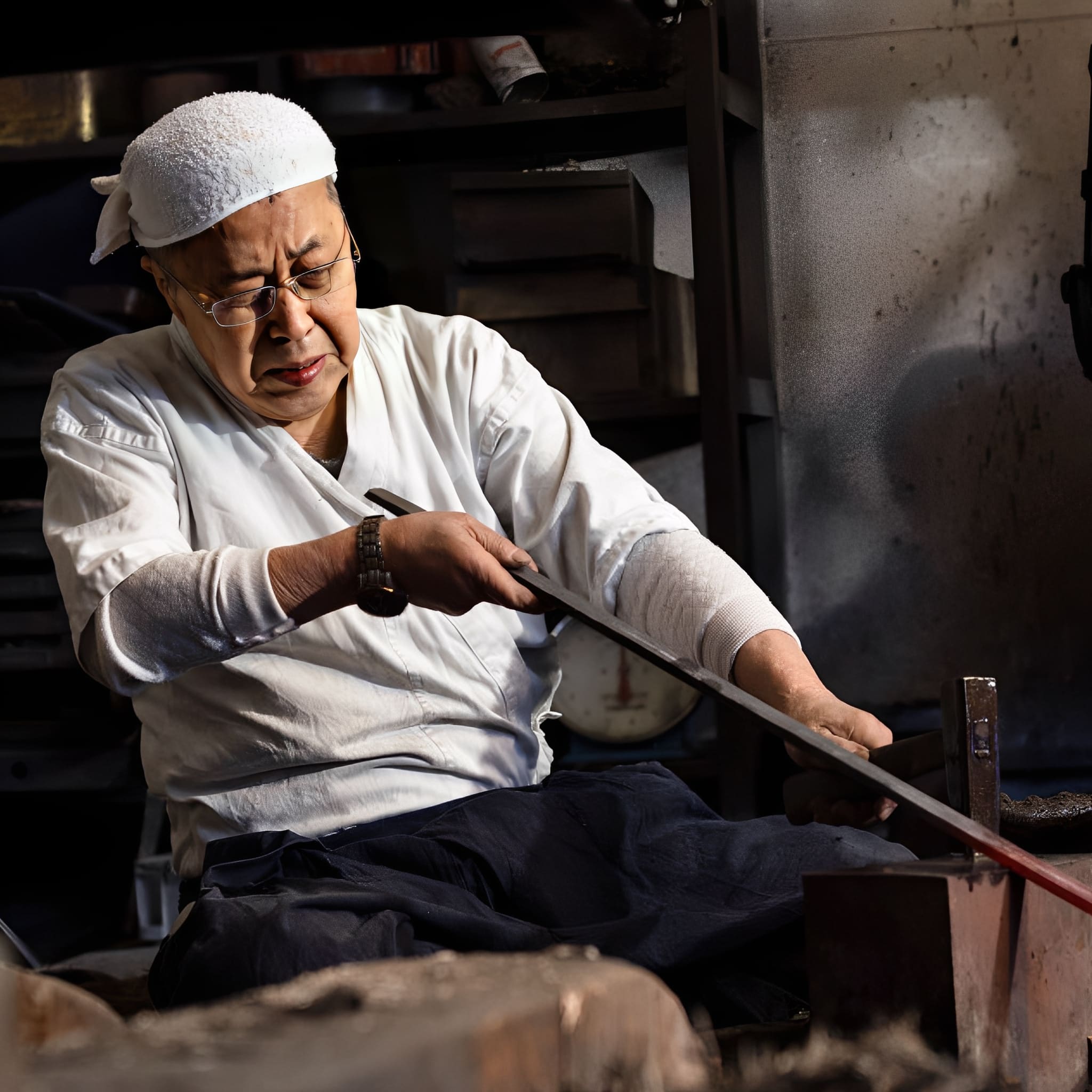
The Art of Traditional Forging
Each katana we craft is born from centuries of samurai tradition.
Our master smiths shape every blade by hand, folding the steel to achieve unmatched strength, flexibility, and beauty.
This time-honored process is not just about creating a weapon? it’s about preserving a legacy of discipline, honor, and artistry.

Materials Chosen Without Compromise
We select only the highest-grade steels and authentic fittings to ensure every katana is both a masterpiece and a reliable companion.
From the flawless hamon line to the perfectly balanced tang, each detail is carefully inspected to meet the highest standards of performance and aesthetics.
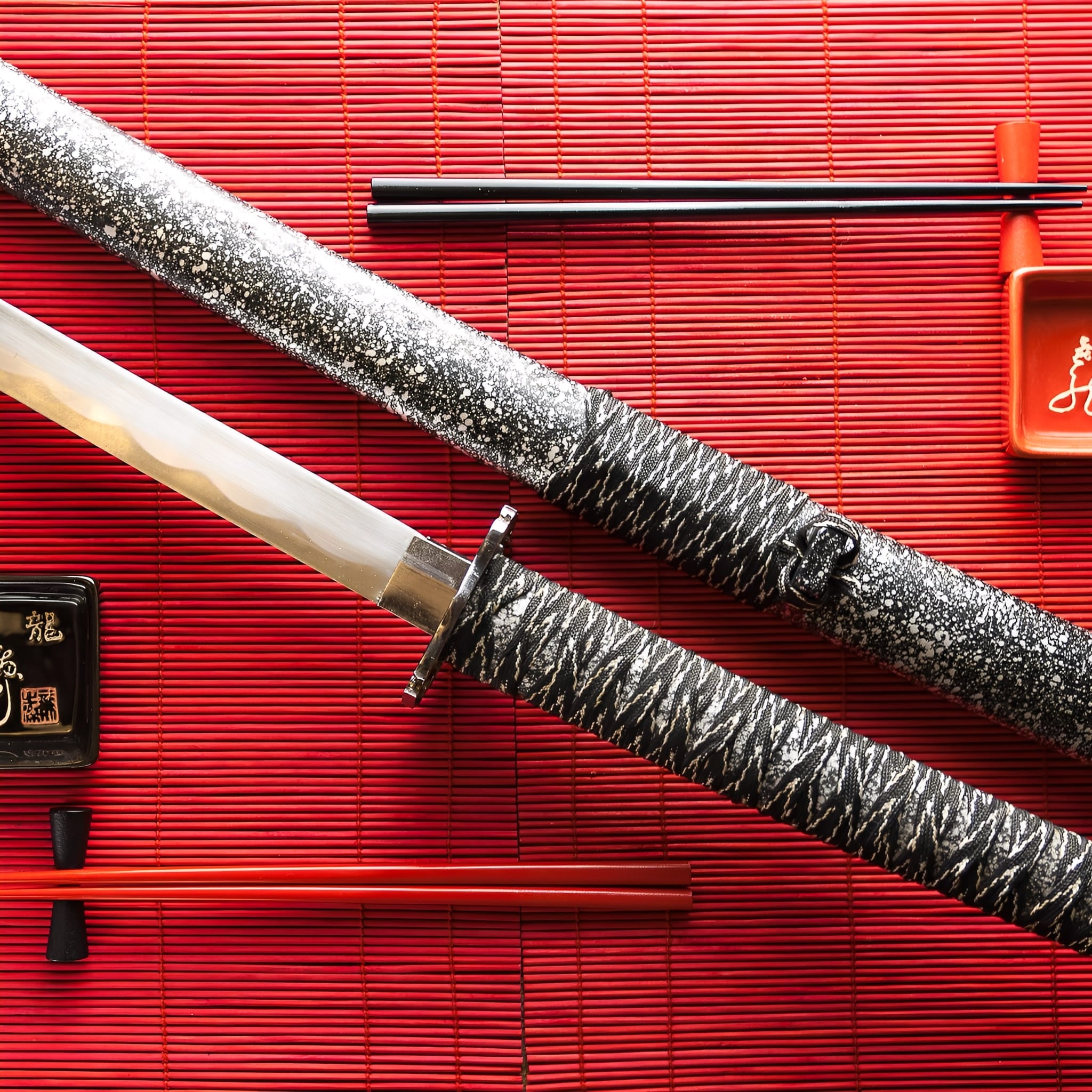
More Than a Sword, A Lifelong Legacy
Owning a handmade katana is an experience that goes beyond the blade itself. It’s holding history, tradition, and craftsmanship in your hands.
Whether displayed as a work of art or wielded with precision, your katana will stand as a symbol of timeless skill and dedication for generations to come.
-
Key Destinations
United States: 5–7 days
Canada: 5–7 days
Australia: 6–9 days
Denmark: 4–6 days
Netherlands: 3–5 days
Sweden: 4–6 days
Switzerland: 3–5 days
Finland: 5–7 days
Singapore: 6–8 days -
Central European Partners
France: 2–3 days
Germany: 3–5 days
Spain: 4–6 days
Italy: 4–6 days
Belgium: 3–5 days
Austria: 4–6 days
Ireland: 4–6 days
Poland: 4–6 days
Portugal: 4–6 days -
Extended EU Network
Czechia: 4–6 days
Hungary: 4–6 days
Slovakia: 4–6 days
Slovenia: 5–7 days
Romania: 5–7 days
Bulgaria: 5–7 days
Croatia: 5–7 days
Serbia: 5–7 days
Estonia: 5–7 days
Latvia: 5–7 days
Lithuania: 5–7 days
Luxembourg: 3–5 days
Greece: 5–8 days -
FAQ’s
Visit our FAQs page to find answers to common questions.